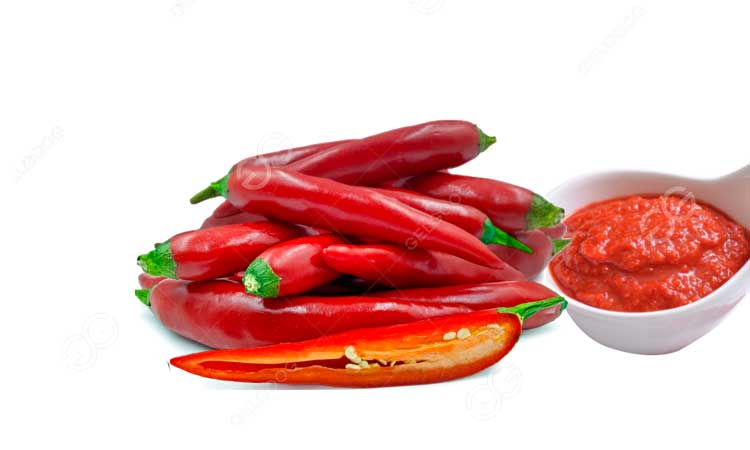Chili sauce, a beloved condiment that adds a fiery kick to countless dishes, undergoes a meticulous production process in factories to ensure its quality and taste. From the selection of ripe chilies to the final bottled product, each step plays a crucial role in creating that perfect blend of heat and flavor. But what is the production process of chilli sauce?

Chili cleaning and sorting:
The journey of chili sauce begins with the careful selection and cleaning of fresh chilies. These chilies are sourced from local farms or suppliers, and quality control is paramount. After arriving at the factory, the chilies are thoroughly cleaned to remove any dirt, debris, or contaminants. They are then sorted to separate the ripe ones from the unripe or damaged ones, ensuring only the finest chilies are used in the sauce.
Grinding:
Once the chilies are sorted, they are sent to the grinding phase. Here, the chilies are crushed into a fine paste. The grinding process can vary in intensity, depending on the desired texture and heat level of the sauce. Some sauces may have a smoother consistency, while others retain a coarser texture.
Preheat:
After grinding, the chili paste is preheated. Preheating serves two essential purposes. First, it helps to enhance the flavor by releasing the volatile compounds within the chilies. Second, it prepares the paste for the next step by reducing its moisture content, which is crucial for achieving the desired thickness and consistency in the final product.
Beating:
The preheated chili paste is then subjected to a beating process. This step involves the addition of various ingredients such as vinegar, sugar, salt, and spices, depending on the recipe. The beating process ensures a thorough and even distribution of these ingredients throughout the chili paste. This is where the distinct flavor profile of the chili sauce is developed, balancing the heat with sweetness, acidity, and seasoning.
Evaporator:
Once the chili paste is perfectly seasoned, it moves to the evaporator. In this phase, excess moisture is removed from the mixture, further concentrating the flavors and thickening the sauce. The temperature and time in the evaporator are carefully controlled to achieve the desired consistency.
Sterilizer:
To ensure the chili sauce is safe for consumption and has a longer shelf life, it undergoes a sterilization process. This process involves heating the sauce to a specific temperature for a set duration to eliminate harmful microorganisms while preserving the sauce’s flavor and quality. Sterilization is a critical step in commercial food production.
Sauce filling:
The final step in the chili sauce production process is filling the sauce into bottles or containers. This is done with precision equipment that ensures each bottle is filled to the correct level. The bottles are sealed, labeled, and packaged for distribution to retailers and consumers.
The production process of chili sauce in a factory is a complex and carefully orchestrated series of steps, each playing a vital role in creating the flavorful condiment we know and love. From the selection of the finest chilies to the precise blending of ingredients and the sterilization for safety, every aspect is designed to deliver a consistent and delicious product to spice up our meals. If you want to start chili sauce business and need the chili sauce production line, contact us now.